Posts published in 2020
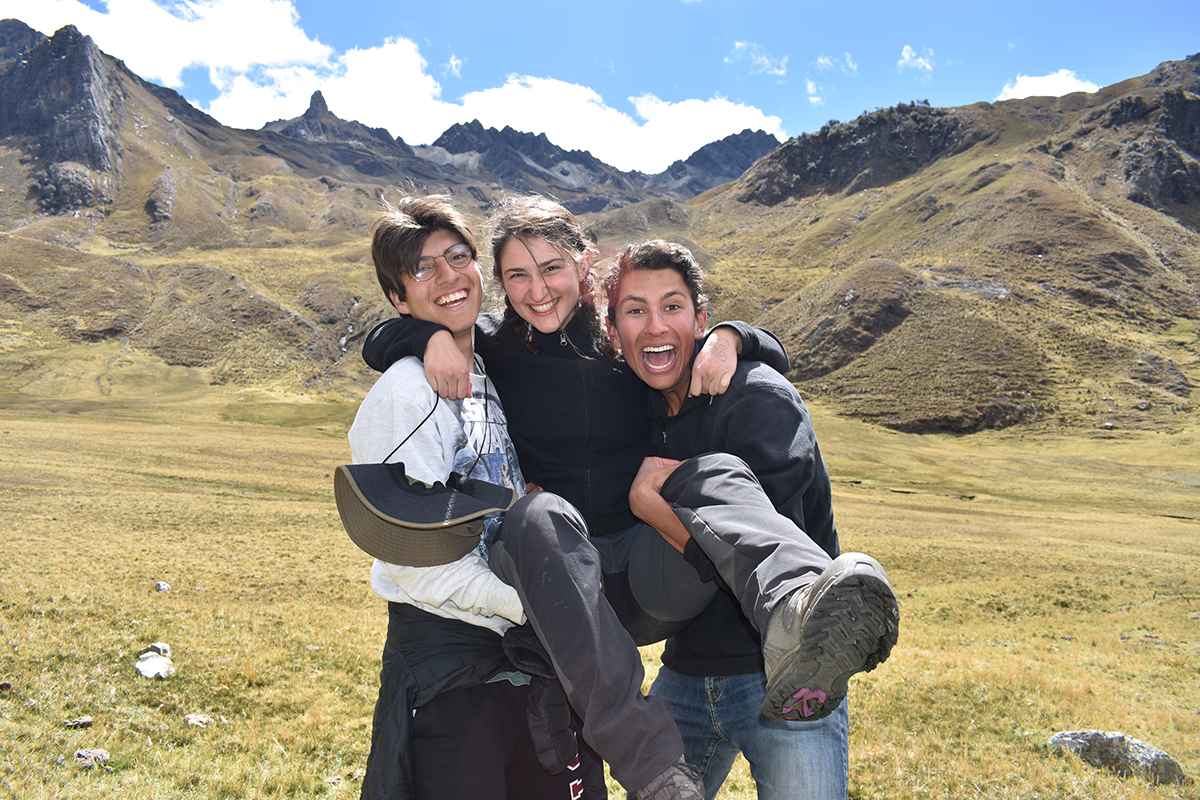
Global Engagement: Engineering Solutions for Sustainability
By Adam Nayak, ’22
Ever since I was little, I have been fascinated with water. I grew up four blocks from Johnson Creek, a local stream in southeast Portland, Oregon. My mom took me down to the park to play in the water, letting the currents wrap around my legs as I searched for tadpoles and capered with dragonflies.
Each month, my family would wake up early in the morning to work with our local watershed council, removing invasive species, planting native species, and picking up trash around the stream.
It was here that my younger sister and I learned about the great salmon migration. I remember being fascinated with the fish: their perseverance, determination, and tenacity, traversing upstream to their birthplace to continue their lineage. As a boy, I was always searching for salmon, but as an urban stream, Johnson Creek faced serious water-quality challenges due to a history of pollution, and I was never able to find any fish.
As I grew older, I developed an interest in the science behind water treatment and ecological systems, looking for solutions to problems of contaminated stormwater and habitat loss. Volunteering with the Johnson Creek Watershed Council was one of my most rewarding experiences, instilling in me a value for public service and community engagement that has grown with me at Stanford.
Through my involvement in Engineers for a Sustainable World (ESW), a Cardinal Commitment student organization, I have been able to pair my interest in environmental conservation with engineering practice. In particular, I worked on a small team of students during a two-quarter Cardinal Course to design and prototype sustainable infrastructure solutions in Chavín de Huántar, Perú, an archaeological site in the Andes Mountains. Through the Cardinal Quarter program, I traveled to Perú with my team this past summer to implement the project and promote cultural conservation.
Our green roofs and modular tensile structures were designed as a new approach to flood mitigation in a rural setting, with a focus on aesthetic integration of roofing structures at a culturally significant site. This opportunity not only strengthened my Spanish language and communication skills, it allowed me to collaborate with engineers and community members, as well as to learn about engineering practices in the context of a different culture and setting.
Service is powerful to me because it establishes a sense of community and belonging. As a student who is passionate about equity and inclusion, I hope to work on sustainability projects in diverse communities worldwide. The experience in Perú has enhanced my ability to collaborate on a team that spans cultural backgrounds and has reaffirmed my passion for public service projects.
Now as a sophomore, I co-lead international ESW projects focused on sustainable engineering and equitable development. They have brought me back to the theme of water, leading a project with community partners in Ghana focused on organic waste mitigation and water treatment through biochar production for carbon filtration.
For me, service involves building relationships and working collaboratively, whether internationally with an organization like el Ministerio del Cultura de Perú, or locally with the Johnson Creek Watershed Council. Both experiences involved a long-term commitment to addressing community needs. From these experiences, I have come to focus on promoting equitable access to resources for all communities, regardless of background. Looking forward, I hope to continue my work in sustainable development as an environmental engineer, focusing on clean water and equity practices in the public sector.

Adam Nayak, ’22, studies civil and environmental engineering. Originally from Portland, Oregon, Adam’s childhood interest in environmental sustainability has led him to pursue a Cardinal Quarter in Perú, enroll in Cardinal Courses, make a Cardinal Commitment with Engineers for a Sustainable World, and serve as a Cardinal Service peer advisor. Adam has also been involved in the Multiracial Identified Community at Stanford; Stanford Strategies for Ecology Education, Diversity, and Sustainability; Students for the Liberation of All People; and Students for a Sustainable Stanford.
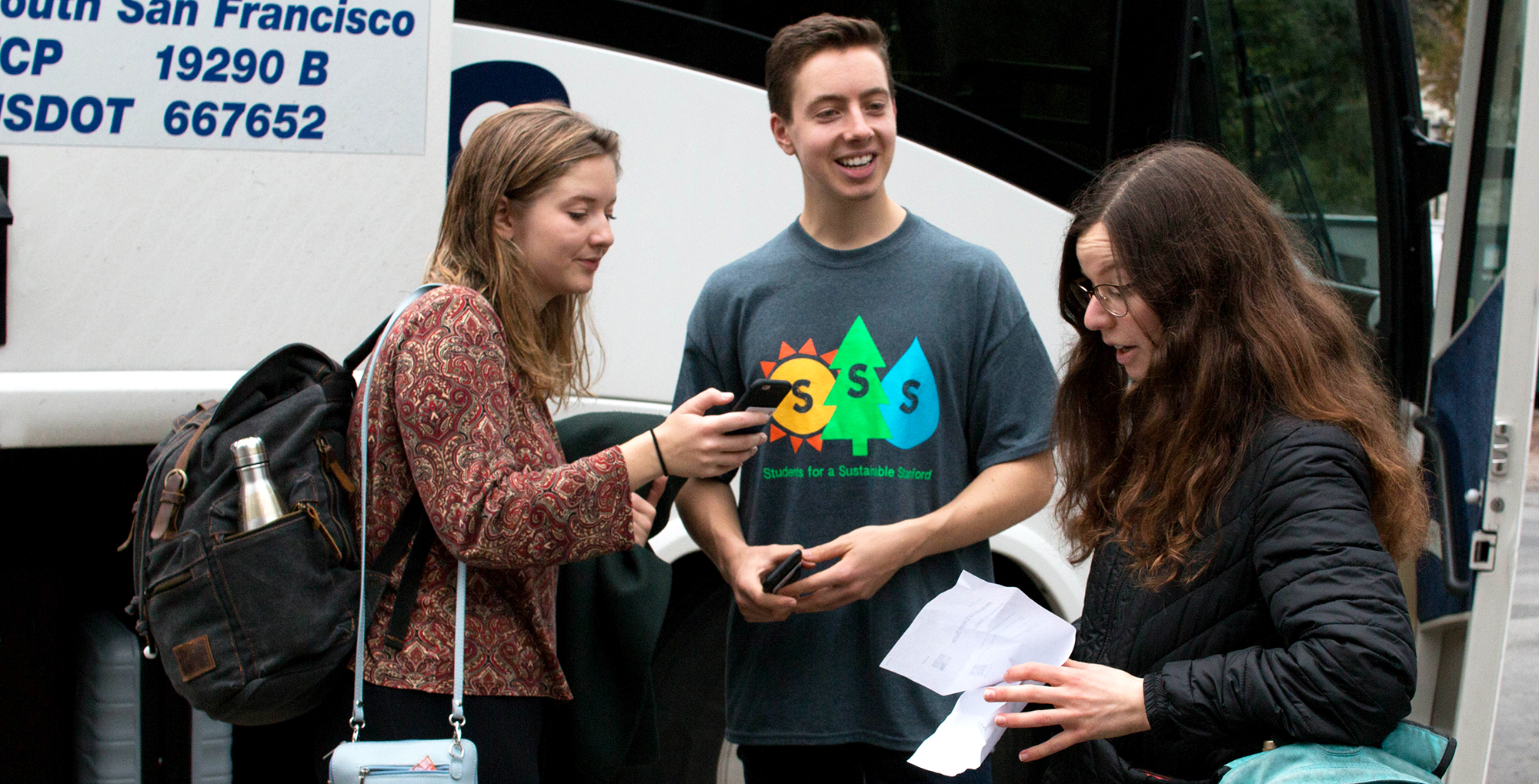
$5 Shuttle Buses to the Airport
By Kelsie Wysong, ’20
I have the pretty unique experience of getting into Stanford off of the waitlist. I remember actually getting a call from my admissions officer, rather than just an email or a letter sent to my house. He spoke with me for almost two hours about whether I should give up my spot at another school in order to take one at Stanford. As a first generation, low income (FLI) student, one of my main concerns about Stanford was money. I remember asking him how most students get to and from the airport when flying home over the holidays.
“Well, I think most students just Uber,” he responded.
Growing up in Metro Detroit, I’d never considered Uber as a transportation option. Even if Uber was more widespread in the Bay Area, I didn’t trust a random stranger to drive me, nor did I have a credit card to open an account. Even then, it seemed to me that Stanford could do more to help its students with getting to and from home.
Stanford is situated almost equally between the San Francisco and San Jose airports. While students have the opportunity to choose between the airports to find the cheapest flights, having multiple departure points makes it much harder to coordinate rides with friends or dorm mates. As a result, students take thousands of costly and carbon-filled individual trips to the airports.
In the spring of 2019, seeing a need to provide students with a more sustainable solution, the Associated Students of Stanford University (ASSU) teamed up with Students for a Sustainable Stanford (SSS) to provide $5 bus shuttles to the airports during spring break. They sold 76 tickets and about half of those students checked in. While the initial trial was small, students who took the shuttles reported satisfaction with the price and drop off points.
I joined the project shortly after the trial run, having been involved with various other sustainability projects on campus. In the fall, we decided to offer the shuttles again to take students to and from the airport for Thanksgiving break. This second iteration sold out. Of the 225 tickets sold, 81% of people actually rode the buses. For winter break, we added more seats on each bus, and even included an additional third day of shuttles. Again, we saw an 81% turn out rate of the 375 tickets we sold.
So far, our shuttle program has been a huge success on campus. Student reviews have been overwhelmingly positive. In addition, our bus shuttles saved students thousands of dollars in Uber rides and prevented over 2,000 lbs. of CO2 pollution. We are excited to continue to learn from the spring break shuttles planned for later this quarter.
This project has truly been one of the highlights of my Stanford career, as I am able to help meet the needs of both the FLI community and the sustainability community. I believe that most students are looking for ways to leave Stanford better than they found it, and this project is my chance at contributing to that dream. When the next person debating on whether or not to attend Stanford asks how they will be expected to travel to and from home, ASSU and SSS will be able to give a sustainable, inclusive answer that directly shows how Stanford students provide solutions for their peers.

Originally from Wayne, MI, Kelsie Wysong, ’20, studies bioengineering at Stanford. Outside of the classroom, Kelsie is the ASSU co-director for environmental justice and sustainability and a member of the Senior Class Cabinet. Through a partnership between the ASSU and Students for a Sustainable Stanford, Kelsie helps organize shuttles to take students to the airport over breaks in order to reduce carbon emissions and save money. They also serve as the vice president of TapTh@T, Stanford’s tap dance performance group.
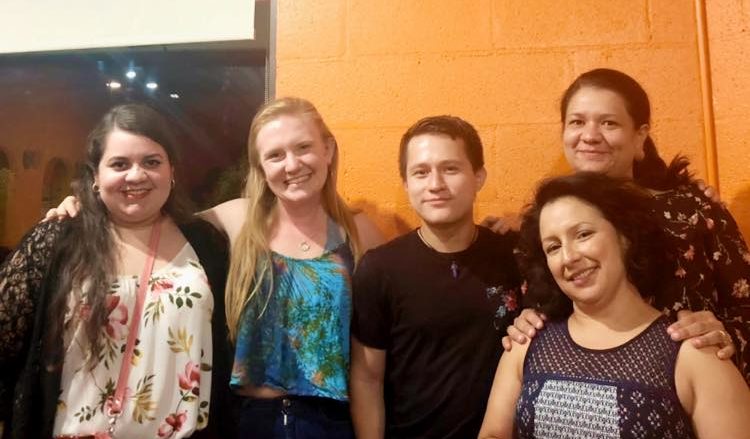
Listen Deeply and Act Strategically: Organizing for More Equitable Education in Colorado
By Tavia Teitler, ’21
I could see the majestic Colorado mountains in my rearview mirror and feel butterflies in my stomach as I pulled into the parking lot of Sister Carmen Community Center. It was my first day of work at Engaged Latino Parents Advancing Student Outcomes (ELPASO), and it only took about 10 minutes of the weekly Monday morning staff meeting for me to realize that I would be working for a truly incredible organization.
The ELPASO community organizers and school-readiness coordinators introduced themselves to me and immediately launched into a discussion about ways to effectively engage with their community in the current climate of fear about immigration. ELPASO’s then executive director, Tere Garcia, then spoke passionately about her new idea for a teddy bear clinic that could help raise awareness about the importance of preventative medical care. As I listened, I was blown away by the passion, energy, and power in the room. My sense of awe and inspiration only grew throughout the summer as I became more familiar with the women of ELPASO and the work they do.
I am majoring in comparative studies in race and ethnicity with a concentration in inequality in education, so a lot of my time at Stanford has been spent learning about theories of education inequity. However, I lacked intimate firsthand knowledge of what people were doing in their communities to tackle these issues. In other words, I didn’t know what many of these concepts and theories looked like on the ground.
ELPASO is a community organization based in Boulder, Colorado, that works to help close the opportunity and achievement gap between White and Latinx students in the area through effective parent engagement. By learning about ELPASO’s parent training and parent advocacy groups, I came to appreciate the power of informed, organized parents, and gained a deeper understanding of all of the factors that go into fighting for more equitable education. The theories I had learned about in the classroom came to life for me as I tagged along as the coordinators went door to door to recruit parents for their training program and listened as parents described their experiences raising their children in this country. I attended meetings with the parent advocacy group to ask school district officials to revise their translator policies and hire bilingual school secretaries. I also took notes as the women held a meeting with the director of the local free clinic to voice concerns about how they and the parents they work with were being treated. Later in the summer, I helped prepare materials for a workshop at a local trailer park on how to fill out money orders properly after the residents were robbed of a month’s rent by their landlord.
I was inspired by the organizers’ and coordinators’ ability to respond to more immediate needs in their community while still maintaining focus on their long-term mission. I learned lessons in the field from the women of ELPASO that both challenged and informed the lessons I’ve learned in the classroom. Most importantly, the women of ELPASO showed me what it means to listen deeply and act strategically. I know I will bring this knowledge back to the classroom, and out into the world after graduation.
This summer helped me realize that community organizing and nonprofit work, especially in relation to issues of education access and equity, is the kind of work I want to do in the future. Though I still need to spend time reflecting on my place as a White Stanford student in organizations that serve historically marginalized communities, I now know that I am committed to learning, just as I learned from my co-workers at ELPASO.

Originally from Carbondale, Colorado, Tavia Teitler, ’21, is majoring in comparative studies in race and ethnicity and psychology. Her interest in education equity led her to return to her home state for a Cardinal Quarter fellowship with Engaged Latino Parents Advancing Student Outcomes (ELPASO) during the summer of 2019. Tavia also serves as a community engaged learning coordinator at the Haas Center for Public Service and as co-chair of Ballet Folklórico de Stanford, a Mexican folk dance group on campus.
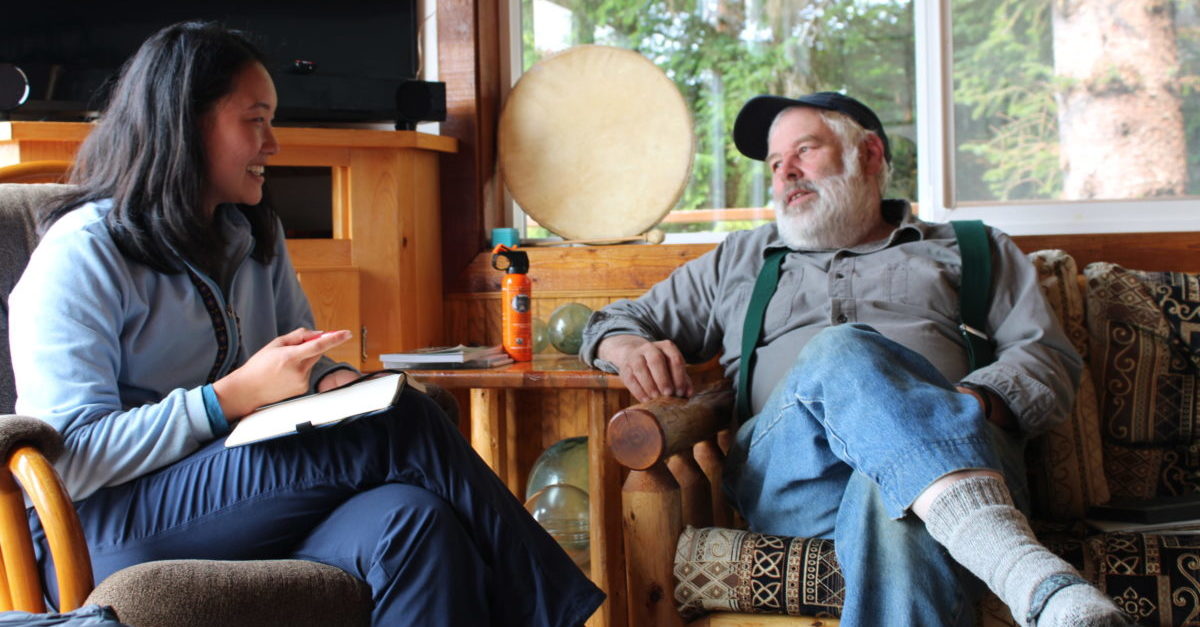
Our Islands, Our Stories: Oral History and Community-Building in Southeast Alaska
By Regina Kong, ’22
We were inside Taiga’s fishing boat, docked at the back of the cove. I remember taking a deep breath before setting the voice recorder down on the wooden table. The boat swayed side to side with the afternoon currents. Behind Taiga, I could see thickets of salmonberries and wild blueberries. According to the locals, the dense vegetation sheltered bears that roamed the island. I began the interview by asking Taiga about his childhood, and from there, I followed him as he spoke about everything from commercial fishing to ecology to fatherhood. To this day, everything about that experience and that summer feels entirely surreal.
Taiga was one of 15 people I interviewed for an oral history project I conducted through an internship with the Inian Islands Institute, a nonprofit experiential field school in Southeast Alaska that engages students in climate advocacy and sustainability. I found Inian as if by fate. When I reached out to Inian’s director, Zach Brown, PhD ’14, a few months prior to the summer of 2019, I learned that they had wanted to do an oral history project for a while, but had never had the capacity to do so.
“Do you think you would like to do this?” Zach asked me during one of our initial phone calls.
“Absolutely,” I said.
From a young age, I have always loved stories, especially those involving multiple generations and cultures. When I began thinking about interning with Inian, I was halfway through my freshman year and already thinking deeply about what a true education meant and what forms of wisdom could be attained outside of the traditional classroom—questions that I discovered resonated with Inian’s own mission.
And that was how, not even a week after the last day of school, I found myself in the breathtaking Southeast Alaskan wilderness, surrounded by endless swathes of forest and ocean. For the rest of the summer, I traveled by boat or seaplane to various communities, collecting stories surrounding the island’s homestead, fondly known by local fishermen as the “Hobbit Hole.” My goal was to preserve important community narratives containing such rich anthropological, ecological, and cultural histories; in the process of doing so, I realized that I was also preserving something much deeper.
Oral histories are a methodology for recording and preserving information not found in written records. Because they are shaped by the contours of an individual’s experience and reflections, they allow for the unearthing of rich and often unexpected stories. While these interviews proved emotionally intense, they also taught me how to listen deeply, how to be fully present. I heard incredible stories and met the wisest and most generous people. Strangers like Taiga shared their homes and lives with me, and I will always be grateful for that. From the changing climate in Southeast Alaska to the area’s geologic history to diverse definitions of home, I found myself continually learning more about this unique community as well as discovering a greater human narrative of love, endurance, and connection.
I know this summer will continue to shape who I am for the rest of my life, and I hope to take these stories and gleams of wisdom with me wherever I am in the world. To Taiga and everyone else who made this experience as special as it was and continues to be, thank you from the bottom of my heart.

Regina Kong, ’22, is from Berkeley, California, and is currently studying comparative literature and art practice at Stanford. She spent the summer of 2019 gathering oral histories from locals in Southeast Alaska as part of the Donald Kennedy Summer Projects Cardinal Quarter fellowship with the Inian Islands Institute. At Stanford, Regina serves as a producer for the Stanford Storytelling Project and works as a student tour guide.
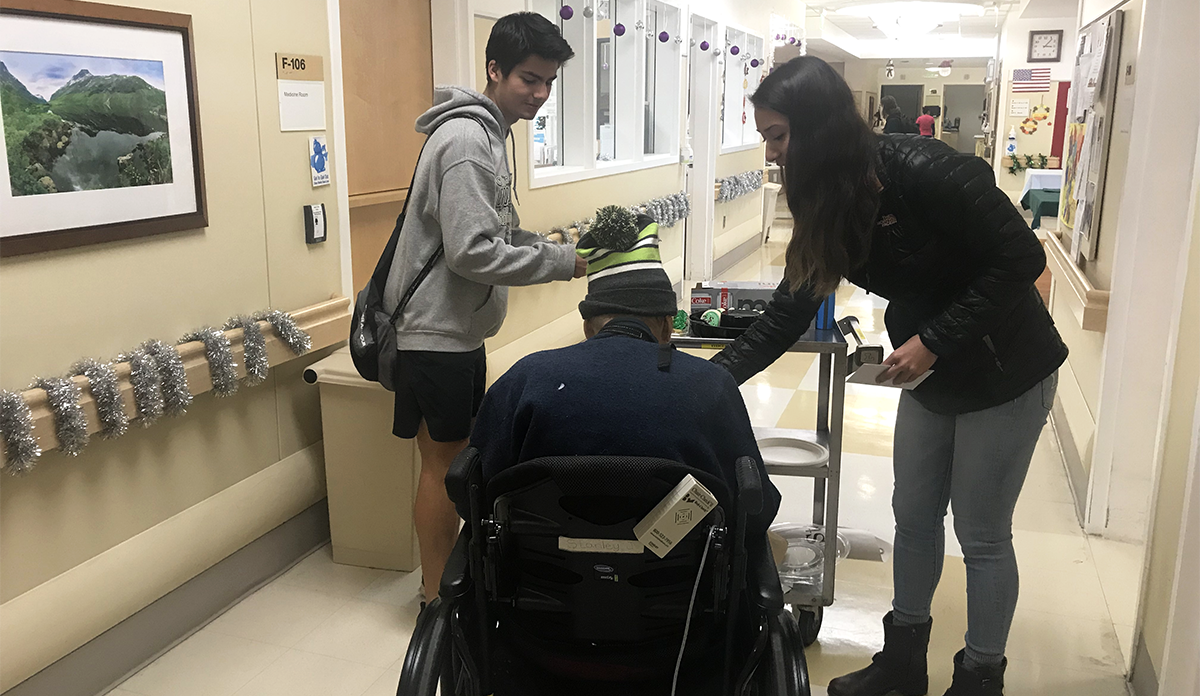
Serving Those Who Have Served: 25 Years of United Students for Veterans’ Health
By Erika DePalatis, ’19
It all began in 1994.
While volunteering in the Alzheimer’s Ward of the Palo Alto Veterans Affairs Administration Hospital, Vance Vanier, a Stanford undergraduate studying economics and political science, noticed that many of the patients were suffering from loneliness.
With little connection to the outside world, many of these veterans rarely had the opportunity to interact with others, outside occasional family visits and planned events. Worse still, patients in this long-term care ward often experienced cognitive impairments such as Alzheimer’s disease or other forms of dementia, which can make patients feel confused or distressed when isolated.
These veterans had served their community; Vanier wanted to help organize their community to serve them. Rallying forty other volunteers, Vanier founded United Students for Veterans’ Health (USVH) with the goal of building caring, meaningful relationships between students and long-term care patients in Veterans Affairs (VA) Hospitals. Vanier’s brother, Andre, launched USVH’s national expansion the following quarter and thereafter expanded his role as the chair of USVH’s National Advisory Board.
Over the years, USVH has expanded across the United States, becoming one of the first nationwide student organizations connecting students with hospitalized veterans. Chapters at the University of Southern California and University of Alabama were founded several years ago, and the group’s sustained growth still continues: earlier this year, a new USVH chapter was established at the University of San Francisco, supported by the diligent efforts of USVH’s national co-presidents, Stanford students Komal Kumar, ’20, and Zane Norville, ’21.
“Our chapter in San Francisco has been a long time coming. The veteran population at the SFVA hospital is conveniently located near two undergraduate universities, San Francisco State University and the University of San Francisco. …[W]e are proud to say the program is launching now, with a group of six dedicated pilot student volunteers,” explains Kumar.
The original Stanford chapter of USVH, however, has never forgotten the local need which first started this national organization. Each fall, USVH recruits new volunteers to serve veterans at the Menlo Park Veterans Affairs Hospital (MPVA). Student volunteers visit the hospital’s long term care facility, where many of the veterans have been living for several years, and, through weekly visits, build meaningful friendships. The group’s connection with the local veteran community has only grown during its many years of operation, as evidenced by the group hosting an increasing number of events at the hospital each quarter, including an event this past fall that attracted the highest veteran turnout in USVH’s history, with over 25 veterans in attendance.
“The hospital can be a dismal and lonely place for some of the veterans,” explains USVH alumni John Rodgers, ’19. “Although it could feel like a small thing to visit the VA once a week, listening to someone’s story and really trying to get to know them can go a long way toward improving their time in the hospital.”
In addition to the relationships built between USVH participants and veterans, USVH plays an important role on campus by hosting educational events that inform the campus community about issues affecting veterans. For example, USVH partnered with the Stanford United Veterans Association (SUVA) in October 2019 to host two SUVA representatives and a VA psychiatrist for a panel discussion on veterans’ portrayal in the media.
This year, USVH celebrates its 25th year of partnership with the Haas Center for Public Service, during which time USVH volunteers have reported serving over 50,000 hours at the MPVA. In partnership with the Haas Center, USVH honors students who sustain their involvement with the group for at least three quarters by offering them a Cardinal Commitment certification. Since the launch of the Cardinal Commitment program just two years ago, 16 USVH students have received this certificate.
The thought of over-scheduled Stanford students consistently making time each week to visit elderly veterans might strike some as surprising; but Kelly Beck-Sordi, Haas Center Associate Director and Director of Cardinal Commitment, would explain that, instead, the dedication of USVH student volunteers is just one example of the growing culture of service on campus.
“Every year, hundreds of Stanford students make year-long commitments to serve with student groups, community organizations, and campus programs, from teaching local youth how to code to advocating for workers’ rights,” Beck-Sordi explains. “USVH has been very successful in engaging students over the years, and that’s because students care about serving those who have served our country. Students want to give back.”

Erika DePalatis, ’19, serves as the Communications Coordinator at the Haas Center for Public Service. Prior to her work at Haas, Erika studied English and Italian at Stanford and worked as an oral communications tutor at the Hume Center for Writing and Speaking. Her role allows her to elevate student stories of service and connect Stanford students with service opportunities.
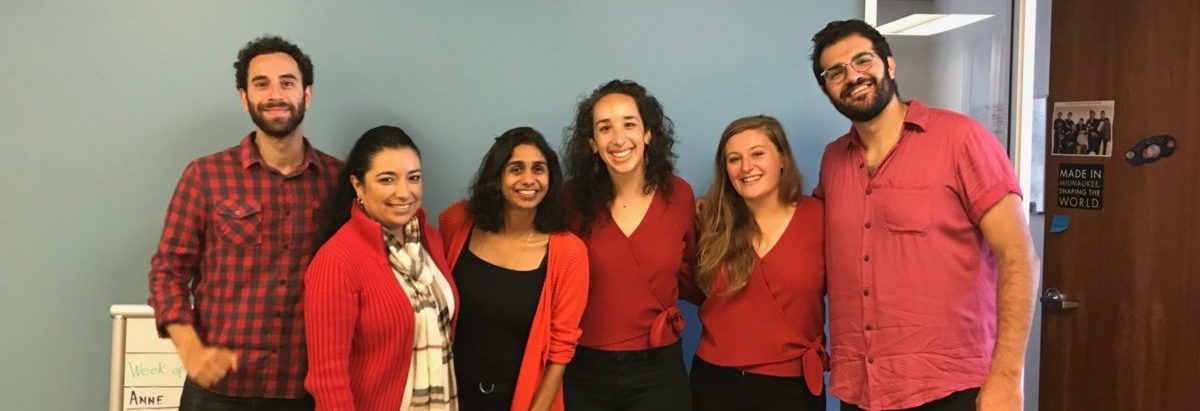
When Home is a Region: Working Towards an Inclusive Bay Area
By Nani Friedman, ’20
In my second week as an intern at Enterprise Community Partners, an organization focused on affordable housing issues, I attended a meeting of the Mayor of Oakland’s Housing Cabinet. A mix of city housing department staff and representatives from affordable housing nonprofits spent the two-hour meeting discussing the importance and challenges of incorporating racial equity components into the city’s affordable housing program guidelines. Though they weren’t able to come to a conclusive decision in two hours, and although people disagreed on the timing and implementation method, everyone was incredibly passionate and utilized their experience to offer new ideas.
I was deeply inspired and motivated by what I saw in that room. As I reflected on what was most meaningful to me this summer, I kept coming back to the constant excitement I felt spending all summer around people who shared my passion for and my perspective on the inextricable link between housing policy and racial justice.
As a regional housing policy intern, I spent most of my summer drafting legislative language and conducting research tasks for AB 1487, state legislation that enables the creation of a Bay Area Housing Finance Authority for the entire nine-county (and 101-city) region. I learned that laws are, in fact, written on Word software. I learned about the political and logistical opportunities and challenges of coordinating an affordable housing strategy at the regional level. I began developing a regional perspective, learning comparatively about the unique housing needs across different jurisdictions; the affordable housing landscape is entirely different between Oakland, Palo Alto, Fairfield, and Sonoma in the context of fire recovery, yet we worked to design a framework for a regional authority that will supplement collective needs and work for everyone. I attended convenings with people from around the Bay Area who were trying to work together to solve our regional problems.
Having grown up in the Bay Area, my work in housing justice at the local level has always felt personal. I am witnessing my friends from high school make decisions about whether or not they can afford to live on the Peninsula, while college friends who have graduated join the ranks of new tenants who are both drawn into and disgusted by the contradictions of Silicon Valley culture. Working in the financial district in San Francisco this summer gave me a new perspective into this culture, as I witnessed who actually lives and works in this region. I know that I bear unique witness to this dual perspective, the “old” and the “new.”
However, I did not anticipate that working on a state bill for a regional housing authority would make me reflect on what this entire region means to me personally. I knew that I had a deep commitment to justice in the county I grew up in, but working on housing at the regional level reframed the geographies that I include in my “home.” If custodial staff working at Stanford are commuting from Antioch, I must consider Antioch to be a part of our home. I realized that if I am going to fight towards an inclusive Bay Area – against the racial and socioeconomic segregation that occurs on a regional level – I needed to make my personal definition of home inclusive of the entire region. The futures of Richmond and Marin, for example, or Oakland and Menlo Park, are deeply connected. I now feel that I have a stake in these connections as a part of my dedication to equity in the place I call home.

Nani Friedman (she/her), ’20 grew up in Belmont, CA. With a major in Urban Studies and a minor in Comparative Studies in Race and Ethnicity, Nani applies her studies to affordable housing issues. She has participated in an Urban Summer Fellowship (2019) and a Community-Based Research Fellowship (2017) through Cardinal Quarter. She is a founding member of the Stanford Coalition for Planning an Equitable 2035 (SCoPE 2035), a housing justice activism group at Stanford.
